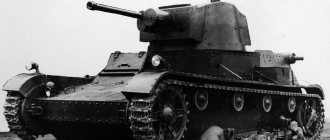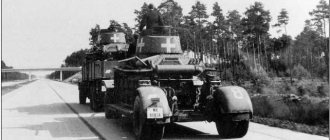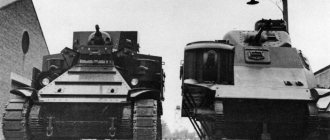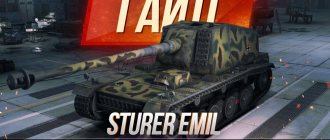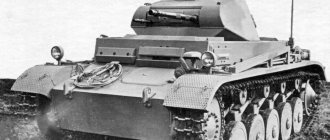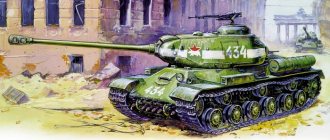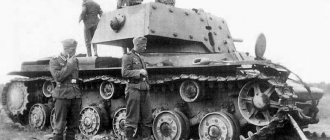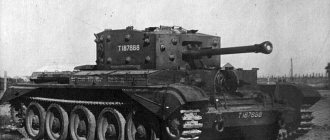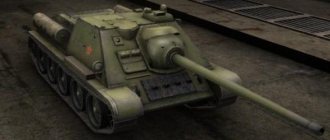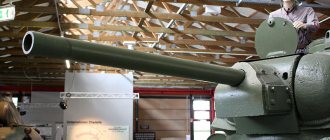AT-L translates as light artillery tractor. It was created in 1947 at one of the tractor factories in Kharkov. The AT-L light tractor entered the market until 1967 in several modifications. He earned respect not only in the army, but also in the national economy. The tractor was also actively used for the development of impassable areas of the USSR.
How was the tractor created?
At the end of 1946, engineers, on the initiative of chief designer N.G. Zubarev, began developing a new artillery tractor for towing a trailer, the mass of which did not exceed 6 tons, together with a load on a 2-ton platform, with the same engine as its predecessors, but with a more advanced chassis and transmission that would meet all the requirements of the army. In this endeavor they received approval from the GAU.
Already in 1948, three samples were presented, which passed factory tests in 1949, interdepartmental tests in 1950, and finally state tests. No deviations from the norm were noticed. The last two samples in 1951-1952 successfully passed military tests in the Arctic, at low temperatures, and in Turkmenistan, on the contrary, at high temperatures.
At the end of 1952, the first batch of new tractors was released from the plant, which received the army name AT-L.
Yuri Pasholok. Relatively light all-steering tractor from Turin
Home » Cars » Yuri Pasholok. Relatively light all-steering tractor from Turin
Cars
byakin 07.07.2021 1005
17
in Favoritesin Favoritesfrom Favorites 8
Yuri Pasholok. Relatively light all-steering tractor from Turin
Lightweight all-wheel drive artillery tractor FIAT-SPA TL 37, one of the examples of successful Italian developments during the war period
Unlike armored vehicles, which had been marking time in its development for a long time, the Italian automotive industry looked slightly different. Of course, there were problems with armored vehicles, but here it is worth remembering what kind of antiques the same Englishmen rode in North Africa for a long time. As for wheeled vehicles, the Italians had a very interesting set back in the 30s. The Italian army, by the way, had a choice: in addition to FIAT and its controlled SPA, military vehicles were also produced by a number of other manufacturers, for example, Breda. This also applied to artillery tractors. Unlike the Germans, who, from the beginning of the 30s, promoted half-track tractors, the Italians relied on wheeled vehicles, some of which had all-wheel drive. They were produced by Breda, Pavesi, and SPA. In general, these are not even trucks, but something closer to a wheeled tractor. The cars are slow, but powerful; it is no coincidence that some of these models were supplied to other countries.
TL 31, a tractor developed by Ugo Pavesi, which was initially considered by the army, but quickly became obsolete in terms of requirements
The most famous and popular heavy-duty tractors were the Trattore Pavesi P 4-100 Mod.26 and Mod.30. They appeared at the end of the First World War, but in reality these non-standard vehicles, distinguished by an articulated frame, began to enter the Italian army in the second half of the 20s. They're sometimes criticized for being slow, but in the 1920s, crawler tractors, their direct counterparts, were even slower. In addition, in the first half of the 30s, a replacement appeared - Trattrice Pesante Breda 32. It’s also not particularly fast, but 30 km/h and 22 km/h is already the difference. Also a powerful machine, which was later developed in the form of the Breda 40 model. In addition, there was a lighter tractor in the Pavesi line - Trattore Leggero LT 31 (L 140), later called Fiat L 140, or TL 31. This 3-ton machine developed a speed of up to 38 km/h and was intended for transporting light field artillery. A completely successful machine, but rather quickly becoming, in the eyes of the Italian army, obsolete. It must be said that the Pavesi machines mentioned were conditional. The fact is that Ugo Pavesi’s company could not cope with orders, so FIAT took them over, transferring them, in turn, to SPA (Società Piemontese Automobili). From the second half of the 20s, FIAT made the company from Turin its “arsenal”, since SPA, or FIAT-SPA, dealt exclusively with military vehicles.
Breda light tractor, essentially a smaller version of the Breda 32
In the first half of 1935, based on the operating experience of the TL 31 wheeled tractors, new requirements appeared. The main complaint about the design of the Pavesi system was that the motor was too weak and the speed was insufficient. According to the requirements, the speed was now supposed to be at least 40, and preferably 50 km/h, respectively, and the engine had to have a power of at least 50 hp. The length of the vehicle was limited to 4200 mm, weight 2800 kg, while 6 crew members and 250 kg of ammunition were transported inside. The vehicle was created as a standard tractor of standard samples of Italian field artillery - 75 mm Cannone Da 75/27 Mod.11 and 100 mm Obice da 100/17 Mod.14. This time there was competition. Breda, which has a good reputation for heavy tractors, has created a smaller version of the Breda 32. As for SPA, which had previously produced Pavesi tractors, this time it created a completely new machine. Initially it was called FIAT-SPA TLa (Trattore Leggero per artiglieria), but later the “classic” index FIAT-SPA TL 37, or simply SPA TL 37, appeared.
Prototype FIAT-SPA TLa. Chains are installed on the wheels for better traction on the ground.
Breda and SPA were faced with an extremely non-trivial task. Firstly, the car was supposed to be quite compact, so that its weight would not exceed reasonable limits. Secondly, the vehicle’s cross-country ability was expected to be no lower than TL 31, and this is not an easy introductory task. The TL 31's cross-country ability was doing very well. In addition, it was necessary to ensure the placement of a crew of 6 people, as well as ammunition. This is exactly what Breda took into account when creating its tractor. From a technical point of view, it was a traditional Breda design, with a clever all-wheel drive system in which a cardan was connected to each wheel. Things were going well with cross-country ability, but not so much with the requirements for placing crews and ammunition. Normally, the crew was located only in front, and at the back it turned out to be a regular cargo body.
The car quickly became a favorite of the competition. Instead of a tractor, SPA has developed a completely comfortable and convenient tractor, more like a regular truck
Emilio Martinotti, chief designer of SPA, approached the issue completely differently. From a technical point of view, the LTa was somewhat reminiscent of a Breda tractor, especially with regard to the wheel drive system. Under the floor, in the center of the car, there was a transfer case, from which the driveshafts went to the wheel gearboxes. The car, by the way, was not only all-wheel drive, but also all-wheel drive. A 4.05-liter gasoline engine with a power of 52 hp was placed in front. at 2000 rpm. The peculiarity of the car was that it started only with the help of a crooked starter, which was made permanent and attached to the radiator grille. The car turned out to be significantly heavier than the original TTT - a little more than 3.5 tons. On the other hand, it was precisely as an artillery tractor that it looked clearly better than its competitor from Breda. 6 people, including the driver, sat quite comfortably on two rows of seats - 2 in front and 4 in the back. To accommodate the ammunition, a trunk with hinged doors was used.
The chassis design was non-trivial, but a similar concept was relatively common on Italian tractors back in the first half of the 30s
The appearance of the SPA LTa began to take shape at the end of 1936, and a year later the first tests began. Despite the fact that the vehicle turned out to be heavier than the original requirements, with a maximum speed almost reaching 40 km/h, the Ministry of War on October 1, 1937 envisioned the delivery of 250 such tractors. It should be noted right away that you shouldn’t look too much at speed. The main task of the vehicle was to tow light field artillery, for which the maximum speed was 40 km/h. But the Italian military looked very carefully at the convenience of calculations. Here SPA TLa was clearly superior to its competitor. The rifle mounts inside the cabin alone were worth it. Joint tests, of course, took place, but they only confirmed the correctness of the choice. On May 31, 1938, the CSM officially recognized TLa as the winner, and at the same time the index changed to TL 37.
Basic version with Celerflex solid tires
Like other wheeled tractors of the Italian army, the FIAT-SPA TL 37 was equipped with wheels with solid rubber tires instead of pneumatic tires. These wheels were called Celerflex. The rims had special mounts for installing chains necessary for heavy off-road use. Considering the speed of movement, such a system was quite normal; at the same time, the issue with the risk of puncturing the wheel was resolved. At the same time, already on May 15, 1939, the question of installing pneumatic tires on the vehicle was raised. These tires performed better at high speeds.
Placing ammunition in the trunk
Pneumatic tires are designated Pirelli Artiglio. They turned out to be more universal, but they did not completely abandon Celerflex. In the metropolis, as well as on export cars, solid rubber was retained. The wheels with Pirelli Artiglio pneumatic tires also had different rims. They had holes that were used to attach chains. This version of the car was called TL 37 Libia. In addition to new Pirelli Libia tires, this modification received an increased fuel reserve from 100 to 150 liters, a reinforced radiator and a more efficient air filter.
Installation of chains on Pirelli Artiglio pneumatic tires
The tire saga did not end there. One of the priority theaters of combat was North Africa, primarily Libya with its deserts. Pirelli Artiglio did not work very well there either. Other tires were needed, more suitable for the desert. These appeared in 1940, they were called Pirelli Sigillo Verde. This tire had a profile of 11.25x24 inches, as well as other rims, without holes, so that sand would not clog them. This version was called TL 37 Sahariano, it had the same modifications as the TL 37 Libia.
TL 37 Sahariano equipped with Pirelli Sigillo Verde tires
And that is not all. For service in desert areas there was another version of the tractor, which received a fourth type of tires. It was called Pirelli Libia, measuring 9.75x24 inches, like the Artiglio model. The wheels were the same as on the TL 37 with Pirelli Artiglio tires, but the rubber pattern was intended for driving on sand. This version was designated TL 37 Coloniale. So to speak, shoes for all occasions.
TL 37 Coloniale with Pirelli Libia tires as a tractor 3.7 cm Pak
Even at the start of mass production, the TL 37 began to grow in terms of modifications. You shouldn’t be surprised by such a stir, because the car really turned out to be successful. The production version of the car was slightly different from the prototype, but the difference turned out to be minimal. The most noticeable change was the appearance of the front bumper, which folded to the side before starting the car. At the time of its appearance, it was a very interesting vehicle, not the simplest in design, but well suited for the role of a light field artillery tractor. An interesting technical solution was the presence of a winch driven by the transfer case. Another point was the car’s ability as a tractor. The bulk of the systems that the LT 37 carried weighed about a ton, but the actual capabilities turned out to be somewhat higher. As practice has shown, the vehicle carried artillery systems weighing 2 tons without problems. That is, the result was a divisional artillery tractor, the closest analogue of which was the French Laffly-Hotchkiss W 15 T. The French vehicle was a little faster, but significantly inferior in crew comfort. However, the main problem of the French car was its mass production, more on that later.
TL 37 Pontiere, a specialized light pontoon fleet tractor
The high performance of the FIAT-SPA TL 37, in terms of the ability to carry heavy loads, led to the appearance of another version. In 1941, production of a specialized version of the vehicle began, designated TL-37 Pontiere. It is quite easy to distinguish by the design features visible in the rear of the vehicle. This option, as the name suggests, was intended for transporting a light pontoon fleet. For this purpose, a more powerful winch was installed, which at the same time took up more space. In this regard, the size of the luggage compartment has decreased. A total of 484 TL-37 Pontieres were ordered, but significantly fewer were actually delivered. However, several of these machines have survived to this day.
In addition to artillery, TL 37 could carry a number of other towed devices
The successful design of the machine was the reason that more and more new versions of the TL 37 appeared, which are worth talking about separately. But more important is the issue of volumes of mass production, for the same French a very sore subject. The already mentioned Laffly-Hotchkiss W 15 T was released quite a bit, even the shake-up in the form of the start of the war helped little. And here the Italians, even despite the less developed industry, as well as the loading of SPA with a whole series of orders, showed themselves clearly better than the French. By March 1, 1942, the troops already had 1,737 vehicles of all types. It seems like not enough, but we are not talking about a jeep, but a rather complex design vehicle, standing somewhere between the German Sd.Kfz.10 and Sd.Kfz.11 tractors. The tractor was in great demand: both the Italian Air Force, where they were used at airfields, and the navy wanted them. By the end of March 1942, the production volume of the basic version reached 2267 units, and by September 1943 - 2477 units. This does not include special vehicle options.
When using artillery with a limited transportation speed, special trailers were used
The scope of application of these machines by the Italian army was no less wide. They were used wherever the Italians fought. In part, they even took part in the Battle of Britain. The fact is that these vehicles were used as airfield vehicles, serving bombers flying to bomb England. They fought in Greece and Albania, and ended up with TL 37 on the Soviet-German front. Photo chronicles captured not only how Italian tractors advanced in the summer of 1942, but also abandoned vehicles in the winter of 1942-43. Of course, they were used very widely in North Africa. A separate version was created especially for it, AS 37, which is worthy of a separate story.
Trophy from Operation Little Saturn
In September 1943, after the Germans occupied part of Italy, production of the TL 37 continued. Production volumes, alas, are unknown, but some of the machines were not used to create tractors. They were used to make various combat vehicles, including armored cars. However, there was also work according to the profile. The TL 37 was used as a tractor for the 75 mm Pak 40 anti-tank gun. The tractor was used in this form until the very end of the war. In April 1945, SPA workers took part in the uprising, and their machines also took part. At the same time, the geography of TL 37 turned out to be wider. These vehicles also fought quite well in France.
As a tractor for the 75 mm Pak 40 anti-tank gun
The production of the TL 37 did not end there, however, the car was no longer needed in its current form. The new Italian army, which began to be formed using British and American artillery, did not need a tractor for Italian systems. Besides, something simpler was required. The result was a kind of hybrid of the TL 37 and AS 37. The car received a closed cabin and a wooden body, more versatile in terms of transported systems. Now the tractor was used to haul two types of artillery systems. The first was the 40-mm Bofors anti-aircraft automatic gun, but the second was the 17-pounder (76 mm) anti-tank gun. Just in case, the combat weight of this weapon is under 3 tons. A modified version of the tractor was produced until the end of 1948.
TL 37 post-war production, they were used as tractors for 17-pounder anti-tank guns
Nowadays these machines are very rare, however, thanks to the work of restorers, more and more of them are being returned to working condition. Several of these machines have been restored in Russia. The FIAT-SPA TL 37 turned out to be a very successful car, one might say, a source of pride for Italian engineers. This tractor can be safely placed on a par with the most successful examples of wheeled vehicles of the war period. You won’t even immediately understand that this is not a simple car, but a wheeled analogue of a tracked tractor.
List of sources:
- Gli autoveicoli tattici e logistici del Regio Esercito Italiano fino al 1943 Tomo II, Licola Pignato, Flippo Cappellano, 2005
- TL-37 (Notiziario Modellistico), GMT
source: https://zen.yandex.ru/media/yuripasholok/otnositelno-legkii-polnoupravliaemyi-tiagach-iz-turina-60db508c97db6e3a2d4e70f0
What does the design look like?
The only General Motors engine available for solving such problems had limited power, which significantly reduced its losses compared to the on-board clutch, which facilitates control and increases the average speed in impassable conditions.
A reversible winch was placed under the floor of the body, as well as a vertical drum, which made it possible to do without a panty layer. A fuse clutch (which is used against overload), an alarm sensor - all this is included as standard.
The car was equipped with a seeker headlight, and the exterior lighting also had a blackout mode. In the open body there are four folding seats for calculation purposes, and a door with a lock is installed at the rear end of the body. If necessary, the body can be tightly closed with a waterproof awning with side windows. It is necessary to note the sufficient capacity of the platform given the short length of the tractor.
With an average speed of an AT-L tractor with a full load and a 6-ton trailer on an impassable road, it was 22-25 km/h.
Specifications:
- The weight of the machine is 5.8 tons;
- The cabin has three seats;
- Load capacity is 2000 kg;
- There are 8 seats in the body;
- Speed reaches up to 44 km/h.
AT-T transmission
The mechanical transmission of this heavy tractor includes a multi-disc main dry friction clutch, a five-speed gearbox with synchronizers in the 3rd, 4th and 5th gears and a power take-off to the winch, two two-stage planetary turning mechanisms and two single-stage final drives. The use of two-stage planetary turning mechanisms greatly facilitates the control of a heavy special vehicle when maneuvering and ensures a minimum turning radius in place, which is equal to the vehicle track width - 2.64 meters.
AT-T tractor loading platform
The loading platform of tractors of this model is metal, welded, and equipped with an awning. The floor is flat and has hatches for access to the winch. There is a folding tailgate and rows of seats located along or across the sides. They can accommodate 18 personnel. The loading capacity of this cargo platform is 5000 kilograms, its internal dimensions are as follows: 3,576 x 2,950 x 3,600 m, floor area is 10.5 square meters.
Suspension and chassis
The caterpillar propulsion system of the AT-T heavy tractor is five-roller, on each side. It consists of a small-link caterpillar chain of lantern engagement with an open hinge, five double track rollers of significant diameter - 830 mm, with external shock absorption made in the form of rubber bands, a rear guide wheel with a crank mechanism for tensioning the tracks and a front drive wheel with removable gear rims .
The caterpillar chain consists of 93 tracks with guide ridges 500 mm wide, with developed lugs, which makes it possible to attach additional lugs (spurs) to them for movement in deep snow, mud and sand. The tracks are made of wear-resistant steel LG-13 and have good abrasion resistance. The fingers and connecting tracks are fixed with a head and at the ends with riveting. The resource of the caterpillar chain is approximately 6 thousand kilometers.
The tractor suspension is independent torsion bar; The location of the torsion shafts above the bottom of the body is transverse. Shock absorbers were not installed on the front and rear suspension units. The suspension of the tractor provides the ability to travel on dirt roads and highways with a specified maximum speed of 20 and 35 km/h. respectively.
Electrical equipment
The electrical equipment of the tractor is made according to a single-wire circuit with an on-board network voltage of 24 Volts and with negative terminals of the terminals of sources and consumers of electricity on the body. The power sources used are a G-53 DC generator with a power of 1.5 kW (2.03 hp) and four starter 12-volt batteries AKB-6 STEN-140M, which are connected in series-parallel.
AT-T tractor cab
The tractor is equipped with a hood-type four-seater two-door cab, borrowed from the ZIS-150 truck. It differs from the prototype cabin by the presence of a central insert, which provides increased (per person) capacity.
The tractor cabin is equipped with heating and ventilation systems, windshield wipers, sun visors, rubber mats and other necessary equipment. Since the level of vibration and noise in the cabin is very high, the equipment of the tractor driver must include a tank headset.
